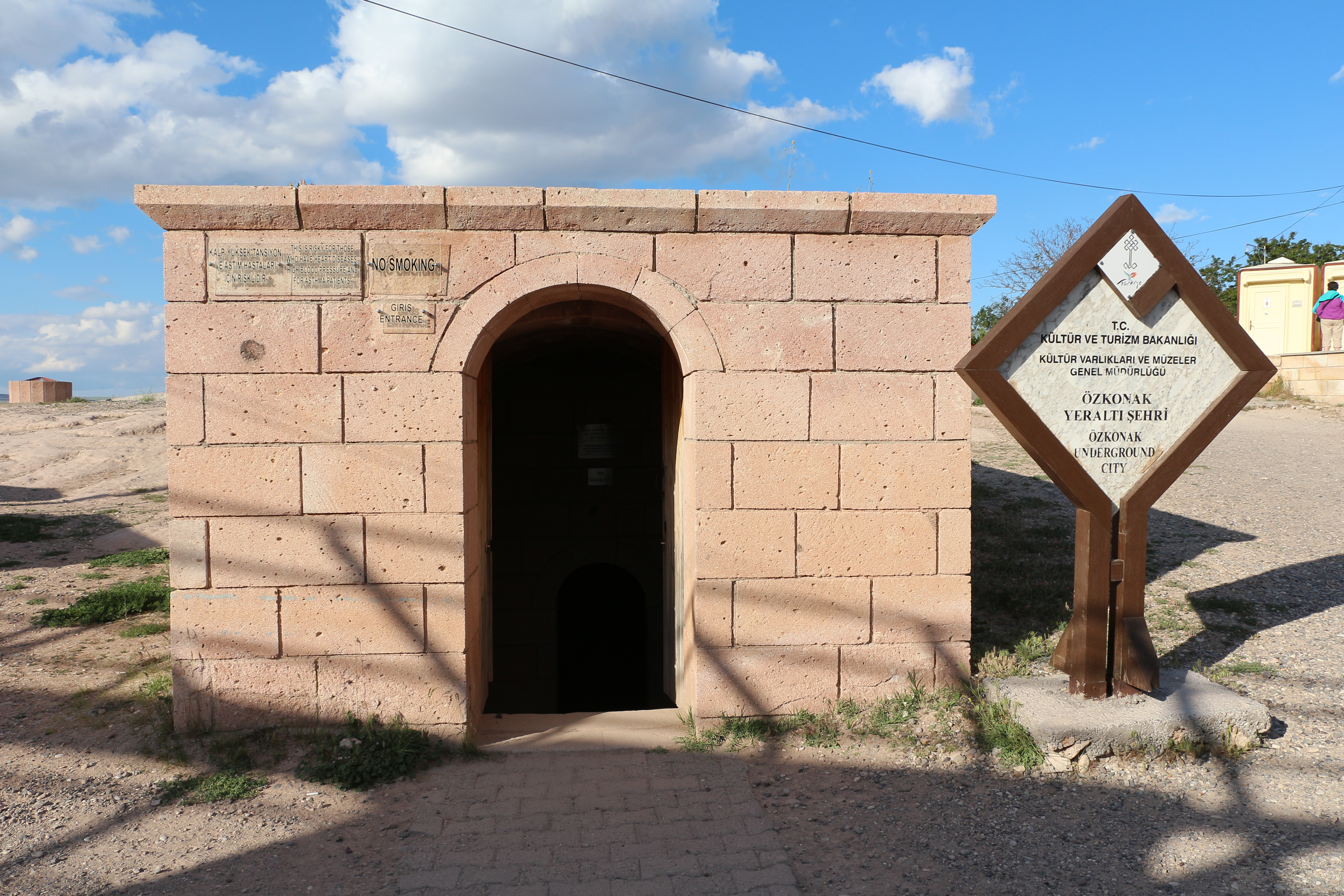Г–zkonak Underground City on:
[Wikipedia]
[Google]
[Amazon]

 Г–zkonak Underground City is an ancient city built into the northern slopes of Mt. Idis about 14 km northeast of
Г–zkonak Underground City is an ancient city built into the northern slopes of Mt. Idis about 14 km northeast of
Community Site (in Turkish) with news, pictures and videos
Underground Cities of Cappadocia - Myth and Reality
in German Underground cities in Cappadocia Archaeological sites in Central Anatolia Populated places of the Byzantine Empire Buildings and structures in NevЕџehir Province Tourist attractions in NevЕџehir Province {{NevЕџehir-geo-stub

 Г–zkonak Underground City is an ancient city built into the northern slopes of Mt. Idis about 14 km northeast of
Г–zkonak Underground City is an ancient city built into the northern slopes of Mt. Idis about 14 km northeast of Avanos
Avanos is a town and district of NevЕџehir Province in the Cappadocia region of Central Anatolia, Turkey, located north of NevЕџehir, the capital city of the province. In 2011 the population of Avanos town was 16,000. Historically known as Veness ...
in NevЕџehir Province
NevЕџehir Province ( tr, , from the Persian compound Щ†Щ€ ШґЩ‡Ш± ''Now-shahr'' meaning "new city") is a province in central Turkey with its capital in NevЕџehir. Its adjacent provinces are KД±rЕџehir to the northwest, Aksaray to the southwest, ...
, in the Central Anatolia
The Central Anatolia Region ( tr, İç Anadolu Bölgesi) is a geographical region of Turkey. The largest city in the region is Ankara. Other big cities are Konya, Kayseri, Eskişehir, Sivas, and Aksaray.
Located in Central Turkey, it is bordered ...
region of Turkey
Turkey ( tr, TГјrkiye ), officially the Republic of TГјrkiye ( tr, TГјrkiye Cumhuriyeti, links=no ), is a list of transcontinental countries, transcontinental country located mainly on the Anatolia, Anatolian Peninsula in Western Asia, with ...
.
Description
The city has many strata made up of volcanic granite. Its larger areas are connected to each other by tunnels, and it contains a pipe communication system reaching each of its levels. This feature is unique when compared to theKaymaklД± Underground City
Kaymakli Underground City (Turkish language, Turkish: KaymaklД±; Cappadocian Greek: О‘ОЅО±ОєОїПЌ) is contained within the citadel of Kaymakli in the Central Anatolia Region of Turkey. First opened to tourists in 1964, the village is about 19&nbs ...
and the Derinkuyu Underground City
The Derinkuyu underground city (Cappadocian Greek: ''Malakopi''; tr, Derinkuyu YeraltД± Ећehri) is an ancient multi-level underground city in the Derinkuyu district in NevЕџehir Province, Turkey, extending to a depth of approximately . It is lar ...
. Each carved room had ventilation provided by further piping when the city was sealed during sieges.
History
The city was probably built by the people of Byzantine Cappadocia, although the age is uncertain and could be older. The Г–zkonak Underground City was discovered in 1972 by a local farmer named Latif Acar, who was curious about where his excess crop water was disappearing to. Latif discovered an underground room which, when later excavated, revealed a whole city which could house 60,000 people for up to three months. Although only four floors are now open, the complex contains a total of ten floors, to a depth of 40 m. Unlike the otherunderground cities
An underground city is a series of linked subterranean spaces that may provide a defensive refuge; a place for living, working or shopping; a transit system; mausolea; wine or storage cellars; cisterns or drainage channels; or several of the ...
in this area, there were holes above the tunnels used for dumping hot sand on the enemy. Just like KaymaklД± and Derinkuyu, Г–zkonak has a water well
A well is an excavation or structure created in the ground by digging, driving, or drilling to access liquid resources, usually water. The oldest and most common kind of well is a water well, to access groundwater in underground aquifers. Th ...
, ventilation system, winery and moving stone doors.
See also
*Cappadocia
Cappadocia or Capadocia (; tr, Kapadokya), is a historical region in Central Anatolia, Turkey. It largely is in the provinces NevЕџehir, Kayseri, Aksaray, KД±rЕџehir, Sivas and NiДџde.
According to Herodotus, in the time of the Ionian Revo ...
*Ihlara Valley
The Ihlara Valley (or Peristrema Valley; Turkish ''Ihlara Vadisi'') is a canyon which is 15 km long and up to 150 m deep in the southwest of the Turkish region of Cappadocia, in the municipality of GГјzelyurt, Aksaray Province. The va ...
*KaymaklД± Underground City
Kaymakli Underground City (Turkish language, Turkish: KaymaklД±; Cappadocian Greek: О‘ОЅО±ОєОїПЌ) is contained within the citadel of Kaymakli in the Central Anatolia Region of Turkey. First opened to tourists in 1964, the village is about 19&nbs ...
*Derinkuyu Underground City
The Derinkuyu underground city (Cappadocian Greek: ''Malakopi''; tr, Derinkuyu YeraltД± Ећehri) is an ancient multi-level underground city in the Derinkuyu district in NevЕџehir Province, Turkey, extending to a depth of approximately . It is lar ...
* Underground cities in Avanos
*Cappadocian Greek
Cappadocian Greek ( cpg, ОљО±ПЂПЂО±ОґОїОєО№ОєО¬, ОљО±ПЂПЂО±ОґОїОєО№ОєО® О”О№О¬О»ОµОєП„ОїП‚), also known as Cappadocian or Asia Minor Greek, is a dialect of modern Greek heavily influenced by Turkish, originally spoken in Cappadocia (modern-day ...
*Spiro Kostof
Spiro Konstantine Kostof (7 May 1936, Istanbul – 7 December 1991, Berkeley) was a Turkish-born American leading architectural historian, and educator. He was a professor at the University of California, Berkeley. His books continue to be widely ...
External links
Community Site (in Turkish) with news, pictures and videos
Underground Cities of Cappadocia - Myth and Reality
in German Underground cities in Cappadocia Archaeological sites in Central Anatolia Populated places of the Byzantine Empire Buildings and structures in NevЕџehir Province Tourist attractions in NevЕџehir Province {{NevЕџehir-geo-stub